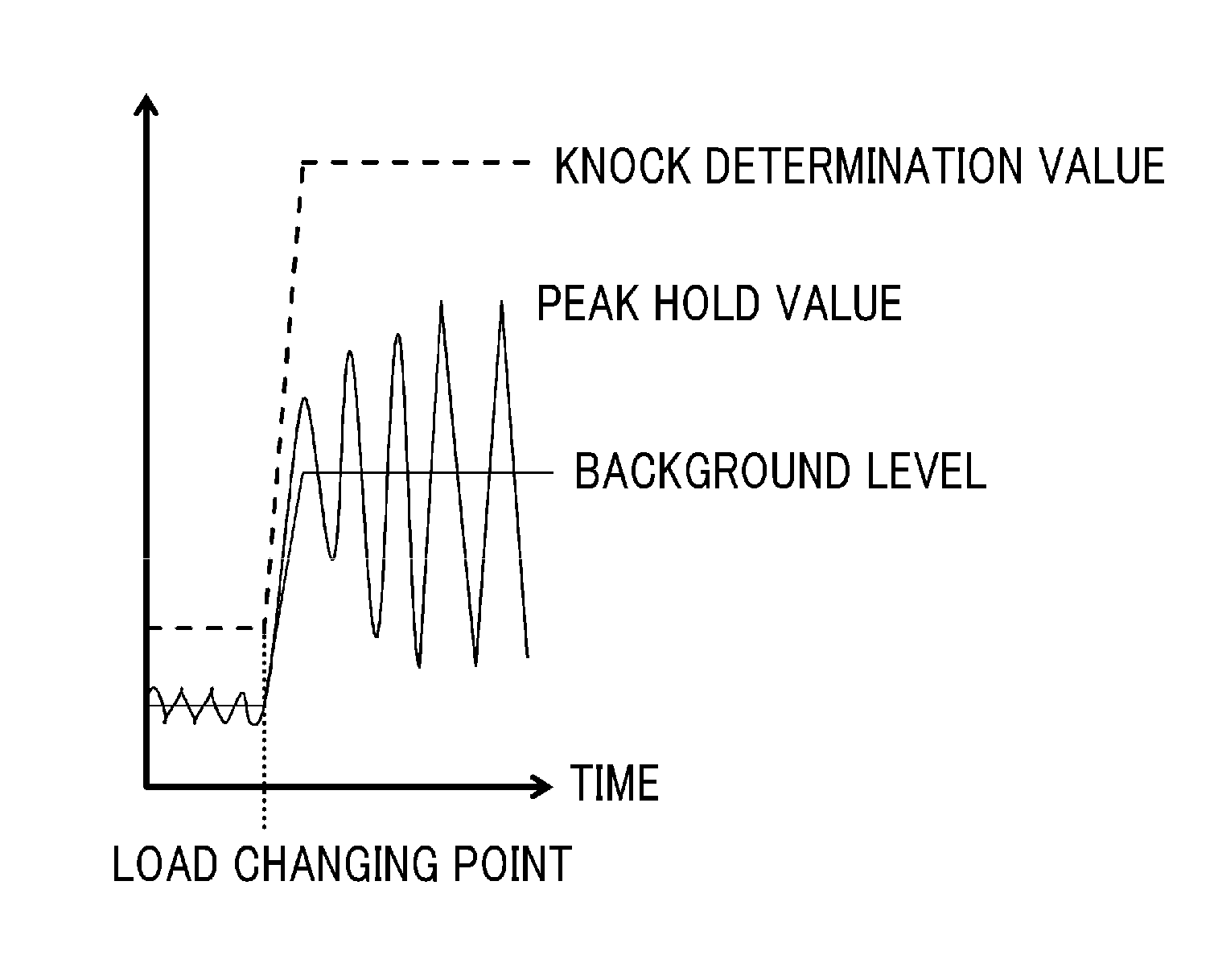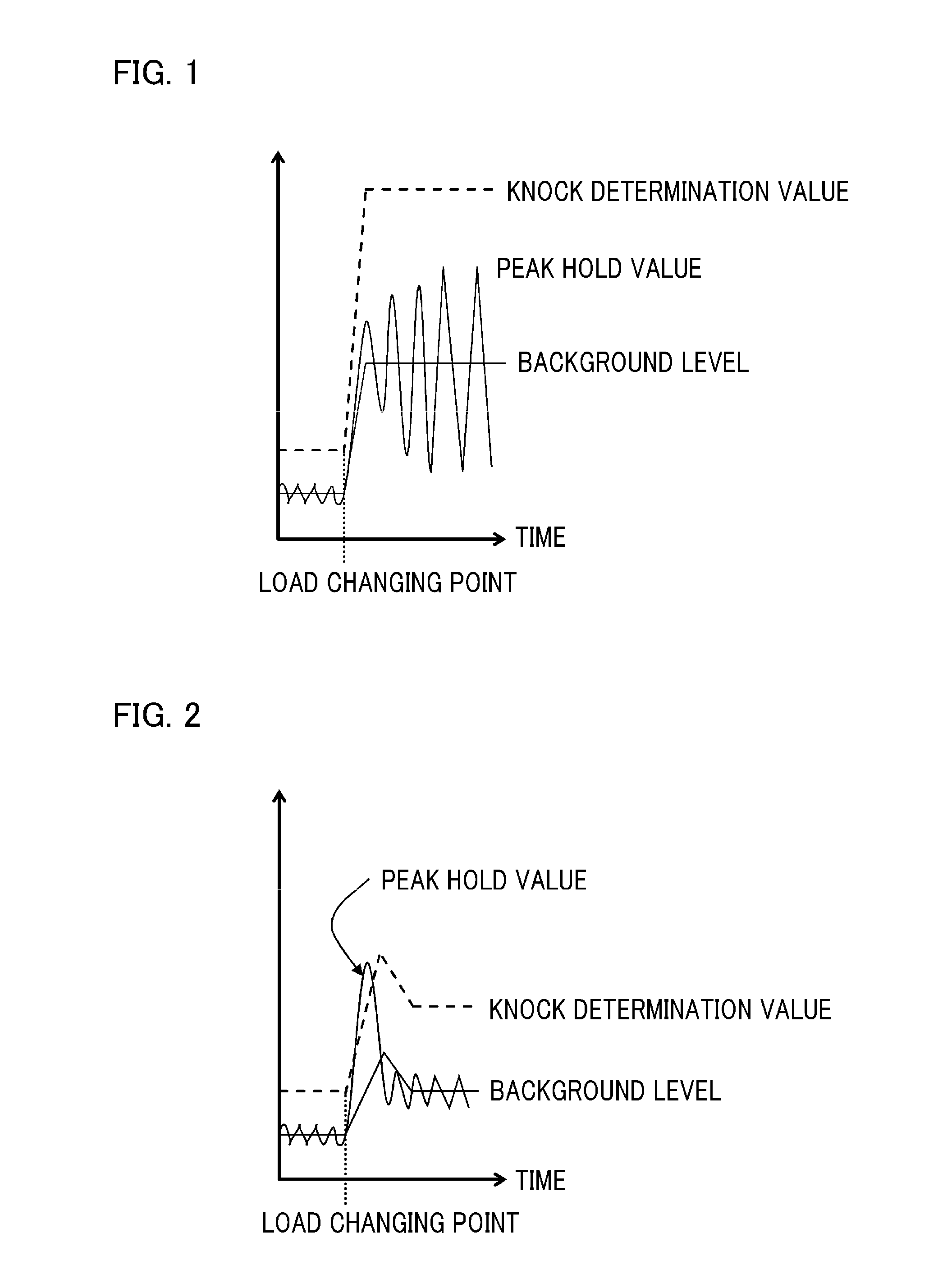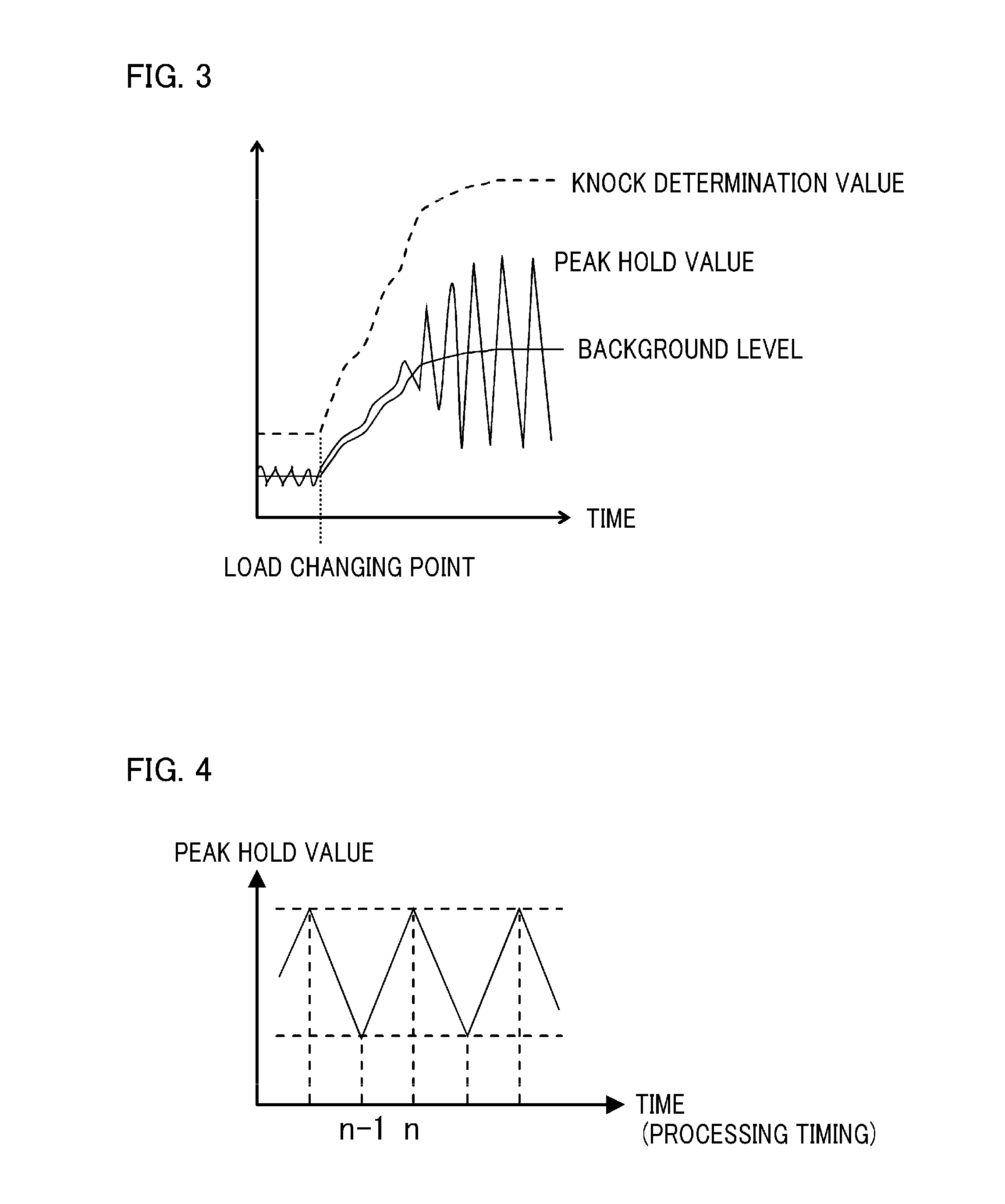Knock control device of internal combustion engine
a control device and internal combustion engine technology, applied in the direction of electric control, machines/engines, instruments, etc., can solve the problems of generating vibration which gives a sense of discomfort to occupants, causing a clogging of the upper surface of the piston, and generating vibration. , to achieve the effect of not increasing the cpu load, low cost, and small processing amoun
- Summary
- Abstract
- Description
- Claims
- Application Information
AI Technical Summary
Benefits of technology
Problems solved by technology
Method used
Image
Examples
embodiment 1
[0048]The basic concept of the present invention will be described first and then a knock control device of an internal combustion engine according to Embodiment 1 of the present invention will be specifically described in detail with reference to drawings.
[0049]In the knock control device of the present invention, a background level is defined as a result of primary filter calculation of an output signal from a knock sensor; and therefore, the background level is defined in the following Equation (1):
VBGL(n)=K×VBGL(n−1)+(1−K)×VP(n) Equation (1)
[0050]where[0051]VBGL(n): background level,[0052]VP(n): peak hold value,[0053]K: filter coefficient, and[0054]n: processing timing (discrete time).
[0055]Incidentally, hereinafter, description will be made that the output signal from the knock sensor is regarded as a peak hold value from the knock sensor; however, the peak hold value of the output signal of the knock sensor may be even an integral value (the area of the higher potential side ...
embodiment 2
[0138]A knock control device of an internal combustion engine according to Embodiment 2 of the present invention will be described. The different point between Embodiment 2 and Embodiment 1 is only a method of calculating a maximum value L of a variation of a peak hold value; and therefore, only this portion will be described.
[0139]The maximum value L of the variation of the peak hold value is defined depending on the engine speed ne of the internal combustion engine. In the method of setting L, as in Embodiment 1, data of peak hold values in various operation states and loads of the internal combustion engine in which a knock is not generated are obtained and maximum values of the variation thereof are classified by the engine speed ne of the internal combustion engine to set as table data. This is L shown in FIG. 6 and, for example, is set as FIG. 11.
[0140]In the maximum value L of the variation of the peak hold value of 25 of FIG. 9, the table of FIG. 11 is interpolated with the ...
embodiment 3
[0145]A knock control device of an internal combustion engine according to Embodiment 3 of the present invention will be described. The different points between Embodiment 3 and Embodiment 1 are a portion of a knock correction quantity calculation section 28 shown in FIG. 9 and a portion from step S10 that determines the presence or absence of the generation of a stationary knock to step S19 that calculates knock correction quantity θR(n) in FIG. 10; and therefore, only these portions will be described.
[0146]In the portion of the knock correction quantity calculation section 28 shown in FIG. 9 in Embodiment 3, the case where the number of repeating times, in which a determination that “stationary knock is generated” is held for a predetermined processing timing T1 when the stationary knock is generated and a determination that “next stationary knock is generated” is established within its hold time, becomes predetermined times T2, is regarded as the determination that “stationary kn...
PUM
 Login to View More
Login to View More Abstract
Description
Claims
Application Information
 Login to View More
Login to View More - R&D
- Intellectual Property
- Life Sciences
- Materials
- Tech Scout
- Unparalleled Data Quality
- Higher Quality Content
- 60% Fewer Hallucinations
Browse by: Latest US Patents, China's latest patents, Technical Efficacy Thesaurus, Application Domain, Technology Topic, Popular Technical Reports.
© 2025 PatSnap. All rights reserved.Legal|Privacy policy|Modern Slavery Act Transparency Statement|Sitemap|About US| Contact US: help@patsnap.com



